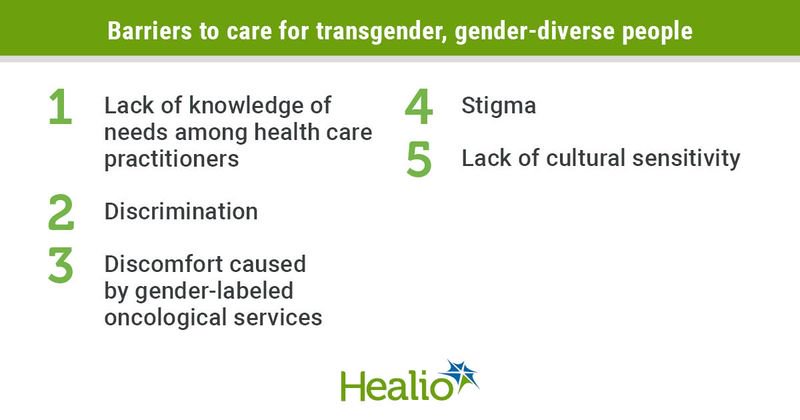Cancer care needs for transgender, gender-diverse individuals inadequately addressed
Click Here to Manage Email Alerts
Social and economic determinants of health contribute to higher burden of HPV and HIV as well as lower likelihood of cancer screening among transgender and gender-diverse people, according to a review published in JAMA Oncology.
The review highlighted the need to optimally address the barriers to care for transgender and gender-diverse individuals in cancer care.

“Transgender and gender-diverse individuals may seek medical interventions to better align parts of their biology with gender identity. This may involve hormone therapy and surgical interventions,” Alberto Giovanni Leone, MD, of Fondazione IRCCS Istituto Nazionale dei Tumori in Milan, and colleagues wrote. “However, the needs of transgender and gender-diverse persons span beyond gender-affirming medical interventions: Existing data suggest that transgender and gender-diverse individuals bear a disproportionate burden of adverse social and health indicators.”
This narrative review focused on the primary and secondary prevention and epidemiology of cancer as well as barriers to health care services and health care practitioners’ knowledge of specific issues related to transgender and gender-diverse people. Leone and colleagues searched PubMed, the Cochrane Library and Embase for citations mentioning transgender and gender-diverse people up to December 2021.
Researchers observed a high prevalence of tobacco consumption and alcohol use among transgender and gender-diverse individuals as well as high rates of infection with HPV and HIV. This population also had a lower likelihood of adherence to cancer screening programs and a higher incidence of HIV- and HPV-associated cancers.
According to the researchers, social and economic determinants of health appeared to drive these health disparities. In addition, researchers noted a lack of knowledge about gender minorities’ health needs among health care practitioners. This represents a major barrier to cancer prevention, care and survivorship among transgender and gender-diverse people.
Other barriers to health care among transgender and gender-diverse people include discrimination, discomfort caused by gender-labeled oncological services, stigma and lack of cultural sensitivity from health care practitioners.
“Health care practitioners and relevant stakeholders have the ethnical and professional obligation to offer the best care to every patient regardless of gender identity and, therefore, to eliminate existing disparities and shape an ultimate gender-diversity-inclusive health care setting,” the researchers wrote.

